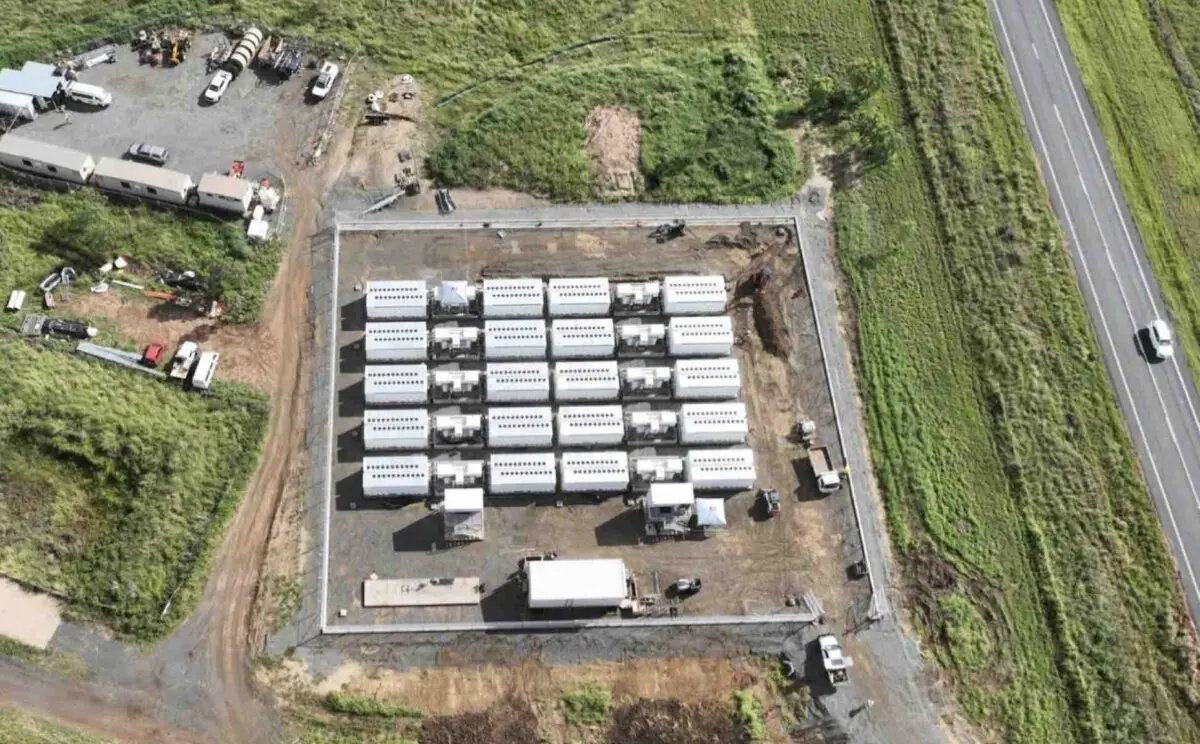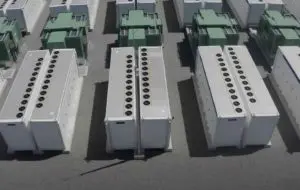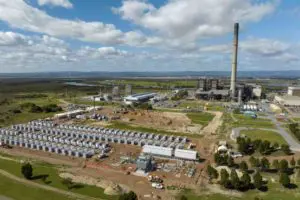Big batteries have been – along with rooftop solar – the strongest part of Australia’s shift from fossil fuels to a renewables-dominated grid. but little is revealed about how some of these project actually perform once built.
The Bouldercombe battery in Queensland is not the biggest in the country, at 50 MW and two hours storage (100 MWh) it is below average size, but is the newest battery on the grid, and has been cashing in on the volatility of Australia’s summer heatwave.
Bouldercombe’s owner is Genex Power, which as Australia’s last remaining listed renewable and storage pure play, is obliged to give rare insight into the performance of its assets. And it seems pretty pleased with the way things are shaping up.
In the December quarter, Bouldercombe only operated at full tilt for the last 19 days of the years, as it fiddled around with its layout so it could replace two Tesla Powerpack modules that had been damaged by fire in November.
In that short time, Bouldercombe earned about $1.1 million in revenue, and achieved a “net” margin of $341 a megawatt hour, thanks to its ability to charge up when wholesale prices are low, or even negative, and sell back into the grid when demand and prices are high.
CEO Craig Francis indicated that the results has been even better in the current quarter because of the extreme market volatility, even in the country’s most coal dependent state.
“In January we saw 74 pricing intervals greater than $1,000 a megawatt hour, and 31 pricing intervals above $10,000/MWh, which is where …. (the batteries) can make huge amounts of revenue in very short periods,” Francis told investors on an earnings call earlier this week.
“Coupled with that we’ve got average charging prices lower than $50 a megawatt hour, so there are really good energy arbitrage market dynamics at the moment in Queensland, which the batteries are well positioned to capitalise on.”
Genex has what it says is a unique deal with Tesla, the supplier of the Megapack battery modules, which is essentially a revenue sharing agreement and allows Tesla to operate the batteries and trade the output in multiple different markets, including the often lucrative frequency services market.
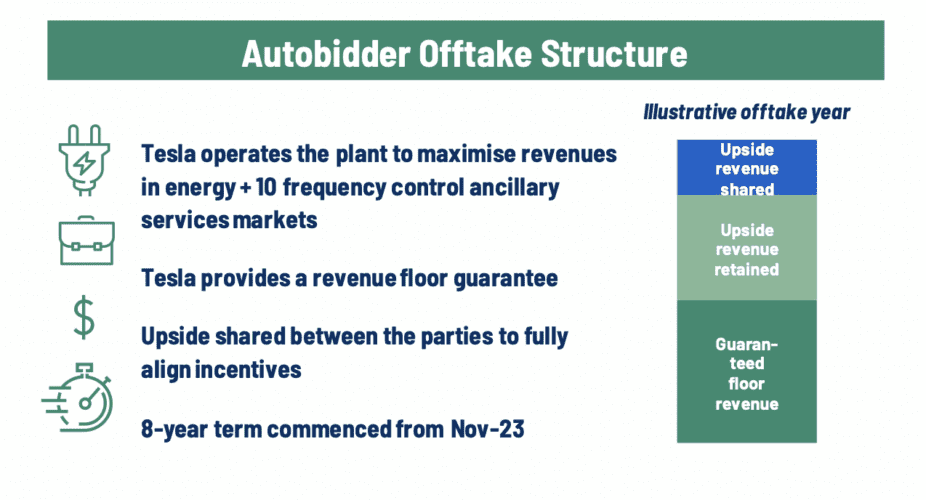
There was no indication of how much of the revenue came from FCAS and how much from arbitrage in the latest quarter, and the fine details and proportions of the revenue sharing arrangement also also not released. But for a guide, Genex says it has a guarantee minimum and then shares in revenues above that.
Francis said the company is pretty happy with this arrangement, which lasts for eight years.
For the moment, the Bouldercombe battery is able to enjoy the big swings in the market price because it is, along with the Wandoan battery, one of only two batteries in the state.
But more are coming, with the Chinchilla battery about to be commissioned, and more under construction, including the Western Downs, Stanwell, Tarong, Swanbank and Greenbank batteries, with others also in the pipeline.
Genex itself is looking at a possible expansion of Bouldercombe, but in the near term it is a much bigger battery project at Bulli Creek, which could be sized at 400 MW and four hours of storage (1600 MWh), next to the huge solar farm it plans to build there to supply Andrew Forrest’s hydrogen plans and other customers.
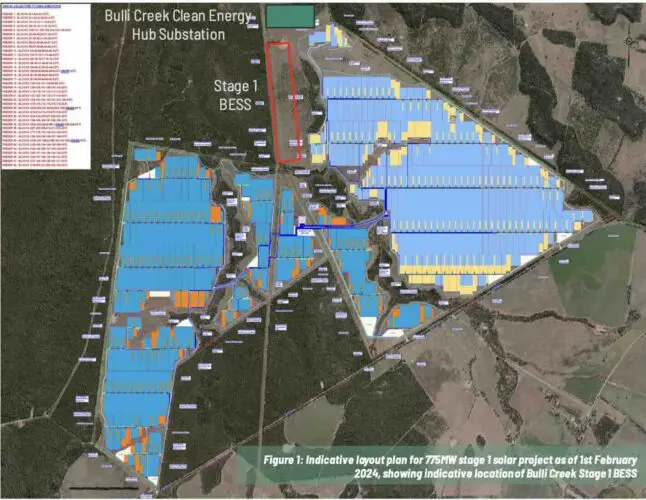
Francis says the company has started the tendering and connection processes for the project, and given its position next to the main transmission line to NSW (see map above), it expects to be well placed to benefit from “multiple” revenue streams.
“Next year will be a real focus on getting this battery project into construction so it is ready to start storing and generating energy in circa 2026 and 2027,” he said.
Francis says the nature of the battery technology and the markets meant the revenue was “lumpy.”
“It’s not the same way as a wind farm or a solar farm because we do have these big price spikes which drive real high revenue earning events and then you obviously have days where there’s there’s little arbitrage in the market.
“When there’s cloudy or cool days in Queensland, you get very little arbitrage so the revenues will be lumpy. Over the long term, I think that’s our expectation, and we’ve certainly seen that day to day in the battery’ performance.”
Genex, of course, is also building the 250 MW, eight-hour Kidston pumped hydro project, which will be the first new pumped hydro project to connect to the grid when it is complete late next year.
The flip side of market volatility and negative pricing is that the company’s solar assets – particularly its 50 MW solar farm at Kidston but also its 50 MW Jemalong solar farm – have also been curtailed.
“The market is shifting rapidly and dynamically. We don’t see this being a regular feature in Queensland,” Francis said. “There is at least half a gigawatt of storage online next spring which will be absorbing the pricing, and shifting the pricing.”
Genex reported a net loss of $3.17 million for the December half as it continued investment in the Kidson pumped hydro plan, and worked on its other projects include Bulli Creek and the 258 MW Kidston wind project.
Its revenues eased to $10 million as a result of the fall in wholesale electricity prices from the previous year, but are expected to grow four-fold once the Kidston pumped hydro project swings into production – it is contracted to EnergyAustralia – and as Bouldercombe has a full year of earnings.
See also RenewEconomy’s Big Battery Storage Map of Australia.

